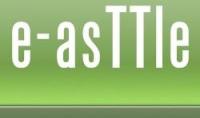You are here:
- Home »
- Assessment tools & resources »
- Commonly used assessments »
- e-asTTle
e-asTTle

e-asTTle is a New Zealand developed suite of online standardised assessment tools. e-asTTle assesses achievement and progress in:
- Reading and mathematics: curriculum levels 2–6
- Writing: curriculum levels 1–6
- Pānui, pāngarau, and tuhituhi: curriculum levels 2–6
When do you use it?
e-asTTle was originally designed for assessing students in years 5–10, but can be used for a wider range of students, and can be administered to individuals or groups. The writing tool can be used for all students, including juniors, as long as they are able to write a couple of sentences. Because the tests are self-created for specific purposes at specific times, as determined by the user, they can be administered whenever needed throughout the year.
What does it give you?
Schools and teachers can access a variety of reports from the online tool, from whole cohort to individual student. Students are given an e-asTTle score and an equivalent curriculum level, and their scores can be compared against national norms. CSV files with scores and curriculum levels are able to be uploaded into a school’s student management system (SMS). Progress of individuals and groups can be tracked longitudinally.
What can you do with the information?
Information from e-asTTle can be used for a wide variety of purposes – from highlighting individual strengths and weaknesses in order to inform further learning, through to comparisons of various groups at school and national level. Purposes and test structure are determined by those creating and administering the test (generally classroom teachers or other school leaders).
Points to consider
e-asTTle relies on the school having a robust ICT infrastructure. Also paramount is sufficient training (some of which is available online) for those who will create, administer, and mark the tests. This is particularly the case for e-asTTle writing, as all marking must be done by the school; no marks can be automatically generated online. Reading and mathematics multi-choice questions are marked online.
An overview of the components:
- Reading and mathematics: Electronically set tests, in multi-choice and open question form, are aligned to the New Zealand Curriculum (2007), and can be tailored to the needs of the classroom. The creator of the test chooses the length, focus, and difficulty of the test. Multi-choice questions are marked online, and others are marked by teachers. The tool provides e-asTTle scale scores and curriculum level and sub level equivalents, as well as specific feedback relating to student performance, identifying individual and group areas of strength and need.
- Writing: The tool allows the creation of a writing prompt to assess deep and surface features of writing aligned to the New Zealand Curriculum (2007). Prompts are available for six different writing purposes and are chosen by the test creator according to classroom need. Teachers mark on a scoring rubric, which converts to e-asTTle writing scores and curriculum level and sub level equivalents when scores are entered into the tool. Reports provide specific feedback relating to student performance, identifying individual areas of weakness and strength. e-asTTle writing is the only standardised and normed writing tool designed for use in New Zealand schools.
Access to e-asTTle
The Ministry of Education is committed to ensuring that all schools can access e-asTTle. If your school does not already have access to e-asTTle and wants to be registered, please contact the Education Service Desk.
Facilitated training and support
Initial e-asTTle training and support opportunities throughout New Zealand are available through the Ministry of Education at no cost to participants. The training and support is through introductory regional workshops and some in-school support for those schools already using e-asTTle. The e-asTTle website provides details of facilitated training.
More information is available on the e-asTTle website.

